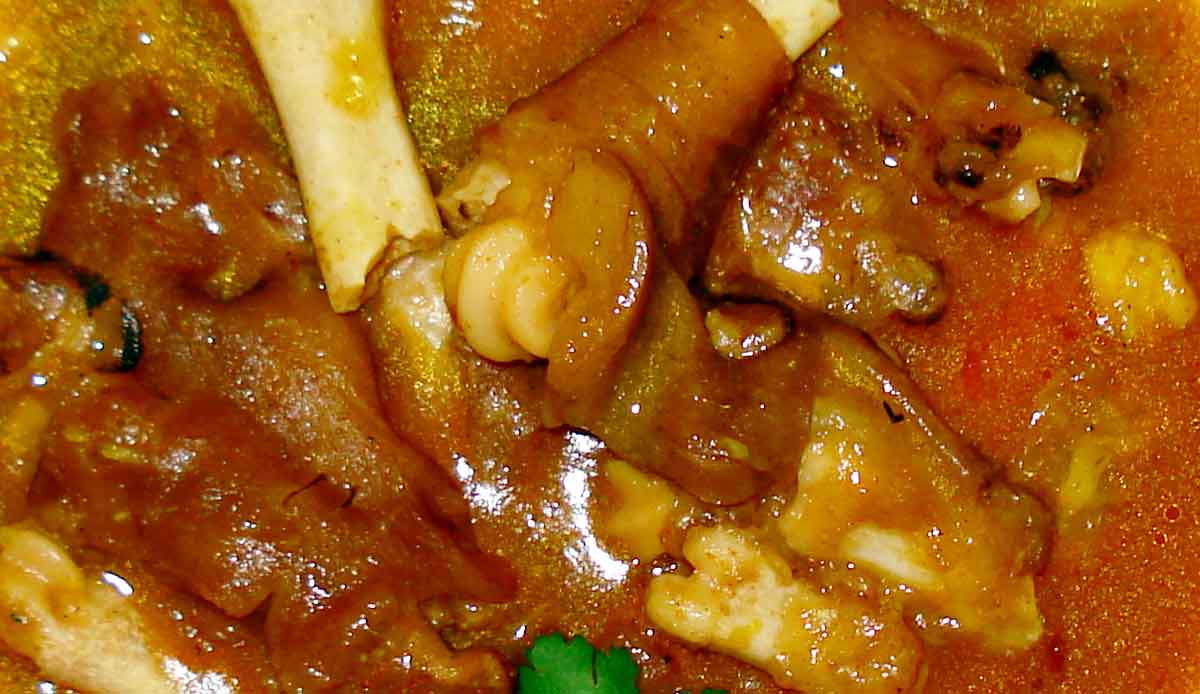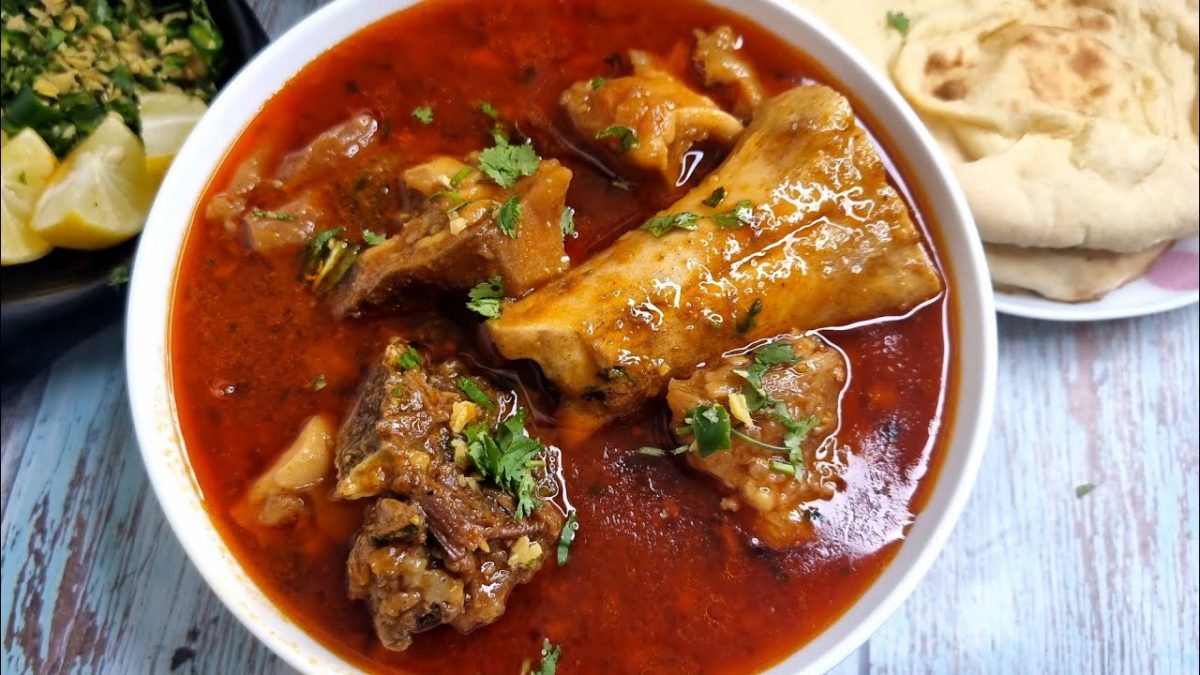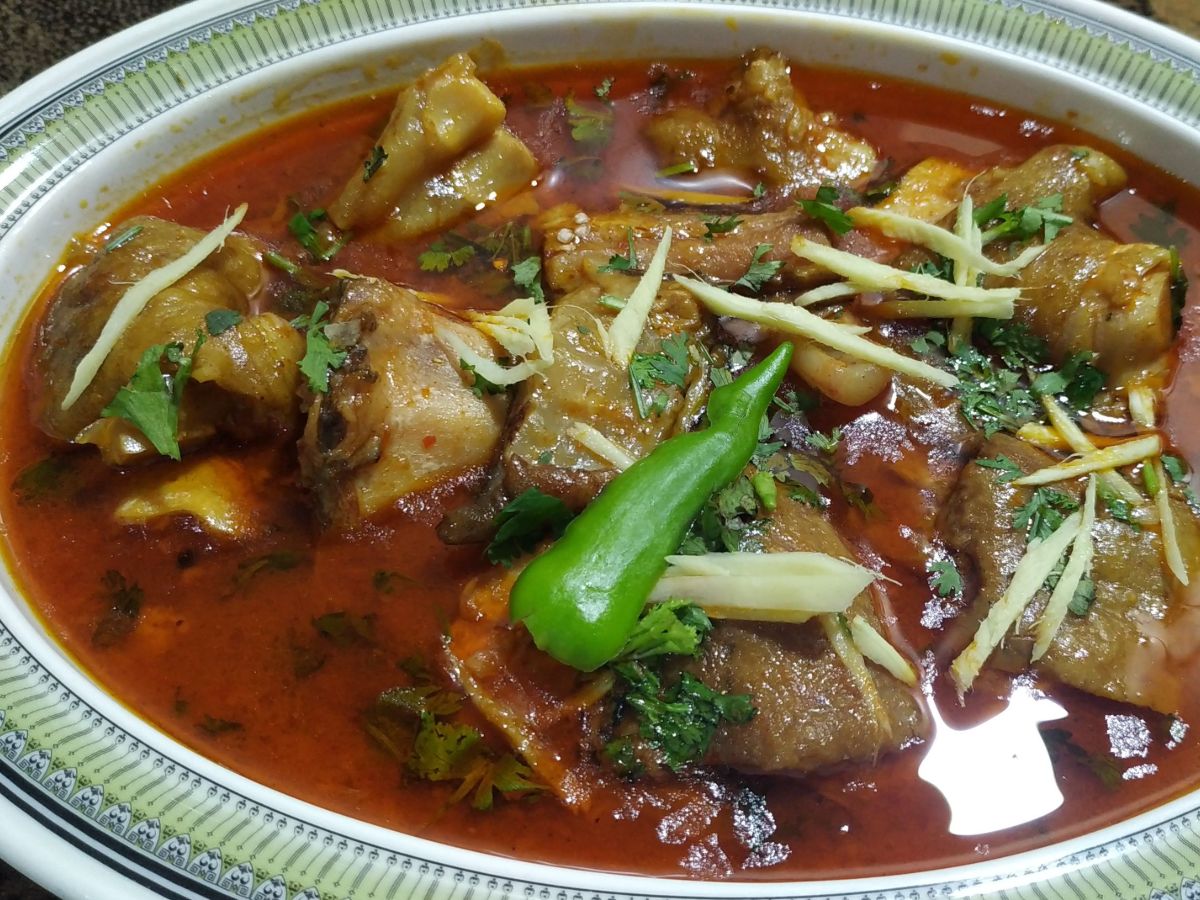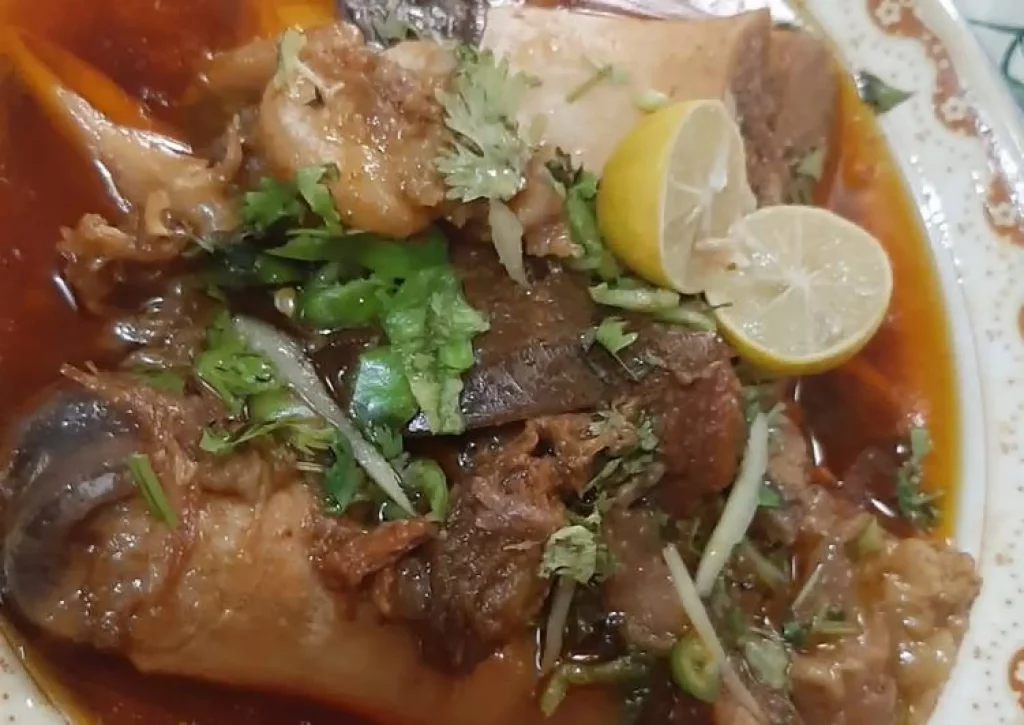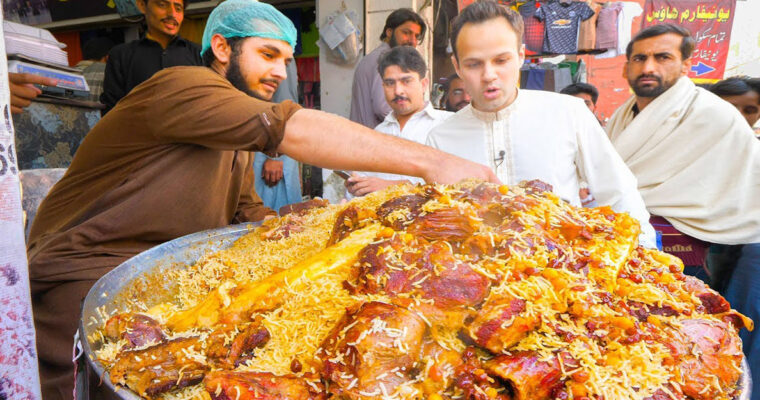Today, I am excited to share with you one of my all-time favorite Pakistani recipes – the flavorful Beef Paya Recipe. This traditional dish hails from Pakistan and features tender Cow’s Trotters. In Pakistani cuisine, you’ll find various Paya dishes, including Mutton Paya, Lamb Paya, and even buffalo Paya. The beauty of this recipe lies in its versatility, allowing you to use both cow and buffalo trotters. Beef Paye is particularly renowned as a breakfast delicacy among Pakistani households, making it a beloved beef recipe.
To create this delectable dish, a bone broth known as Paye is prepared by slow-simmering cow or goat’s foot for over 12 hours with a harmonious blend of aromatic spices and onions. It’s a time-honored method that infuses the broth with immense depth of flavor. I owe my expertise in crafting the perfect beef Paya to my beloved mother, who skillfully modified this recipe and guided me through the process.
Now, you may be wondering why this recipe demands a significant amount of time and patience. Allow me to address this query in due course. Embark on a culinary adventure with this unforgettable beef Paya recipe and discover the rich flavors and tantalizing aromas that have made it a favorite in Pakistani households. Experience the authentic taste of beef recipes Pakistani style and prepare to satisfy your cravings for more.
Why Beef Paya Recipe Become Special in Winter?
Paye is usually prepared throughout the winter months to give much-needed nutritious sustenance. It is popular throughout the winter months due to the benefits it has on the immune system. As you may be aware, your immune levels are at their lowest throughout the winter, making your body prone to viruses. To combat this, you must nourish yourself from within with an abundance of vitamins. A cup of warm Paya soup might provide some protection. It keeps your body hydrated and can also provide protein and vitamins. Not to mention the exquisite tastes of the stew, which are always a pleasure to drink on.
Now Why 12 Hours?
I’ve lately seen Paye prepared in pressure cookers, crock pots, and even ovens! One hallmark of an excellent paye recipe, in my opinion, is how sticky the paye soup is. If my fingers aren’t sticky when I eat it, you didn’t cook it long enough! I suppose you could call myself a Paye connoisseur. So to get the stickiness of Paya you have to cook it for almost 12 hours.
Origin of the Beef Paya:
The Paya evolved from a fusion of South and Central Asian cuisines. It was known as Pacha in Central Asia. Muslim cooks in Lahore, Hyderabad, Telangana, and Lucknow modified the dish to their respective cuisines.
Paya grew in popularity throughout modern-day India, Pakistan, and Bangladesh. Paya is accessible at restaurants serving South Asian cuisine outside of the Indian subcontinent. Accordingly, this has several names in different food cuisines as it is called ‘khurode’ in new Delhi.
My Recipe for Pakistani Beef Paya:
My recipe included a unique step in which I would always roast the bones on the stovetop before cooking them. This process may appear tiresome, but it is precisely this procedure that will eliminate any smell while boosting the flavour of bone broth. It also burns off any lingering hair that the butcher missed.
Stage 1:
- Take each bone and gently toast it on all sides on the stove flame. Roast for about 2-3 minutes, moving each bone around the heat gently. Make absolutely sure not to burn the bone. Make certain that the sensitive skin of the bone is exposed to the flames. You might be able to smell the fat melting away from the bones. It’s natural, so don’t be concerned.
- Prepare a large kettle of water and place each bone in it to cool after roasting.
- After allowing the bones to cool, take each one and carefully scrape the burnt skin with a knife. Then simply wash them thoroughly.
- In a big saucepan, combine all of the washed Paye with water and boil on high.
- Season with salt, red chilli powder, coriander powder, turmeric, bay leaves, black cardamom, cloves, peppercorns, cinnamon, and ginger-garlic paste.
- Except for the garam masala, you’ve added all of the spices!
Stage 2:
- Bring Paye to a boil in a pot of water. Then, cover the saucepan, decrease the heat to medium, and let it to boil for about 1 hour, or until the water has nearly totally reduced.
- The onions will have dissolved with the spices and paye after an hour. Then add the oil and garam masala and cook the paye for 10 to 15 minutes.
- In Pakistani/Indian cookery, this is known as “bhoona,” or frying the meat in oil. This step is critical for maximising taste in your meat dish and removing any odour from the meat.
- The oil will begin to separate from the spices (masala). When your arm starts to hurt (and it will if you’re out of shape like me), you know you’re done frying.
Note: The Paye can get rather sticky, so use a very strong, preferably metal, spatula to separate the oil from the spices.
Stage 3:
- Then, fill the pot about three-quarters full with water and turn the heat to low. Cover the saucepan and leave it to cook for 7-8 hours. Yes, you read that correctly. Paye must cook for at least eight hours. Cooking time should not be shortened. Because this is a bone broth recipe, the longer you heat it, the more nutritious it will be.
- Check the Paye for salt after about 8 hours.
- Then, at the very end, sprinkle with chopped cilantro. With Naan, Kulcha, or Afghan Naan, serve.
If you want to know less time taking Beef Paya Recipe then you can watch this video
My recipe included a unique step in which I would always roast the bones on the stovetop before cooking them. This process may appear tiresome, but it is precisely this procedure that will eliminate any smell while boosting the flavour of bone broth. It also burns off any lingering hair that the butcher missed.Pakistani Beef Paya Recipe - Eid Special
Ingredients
Directions
